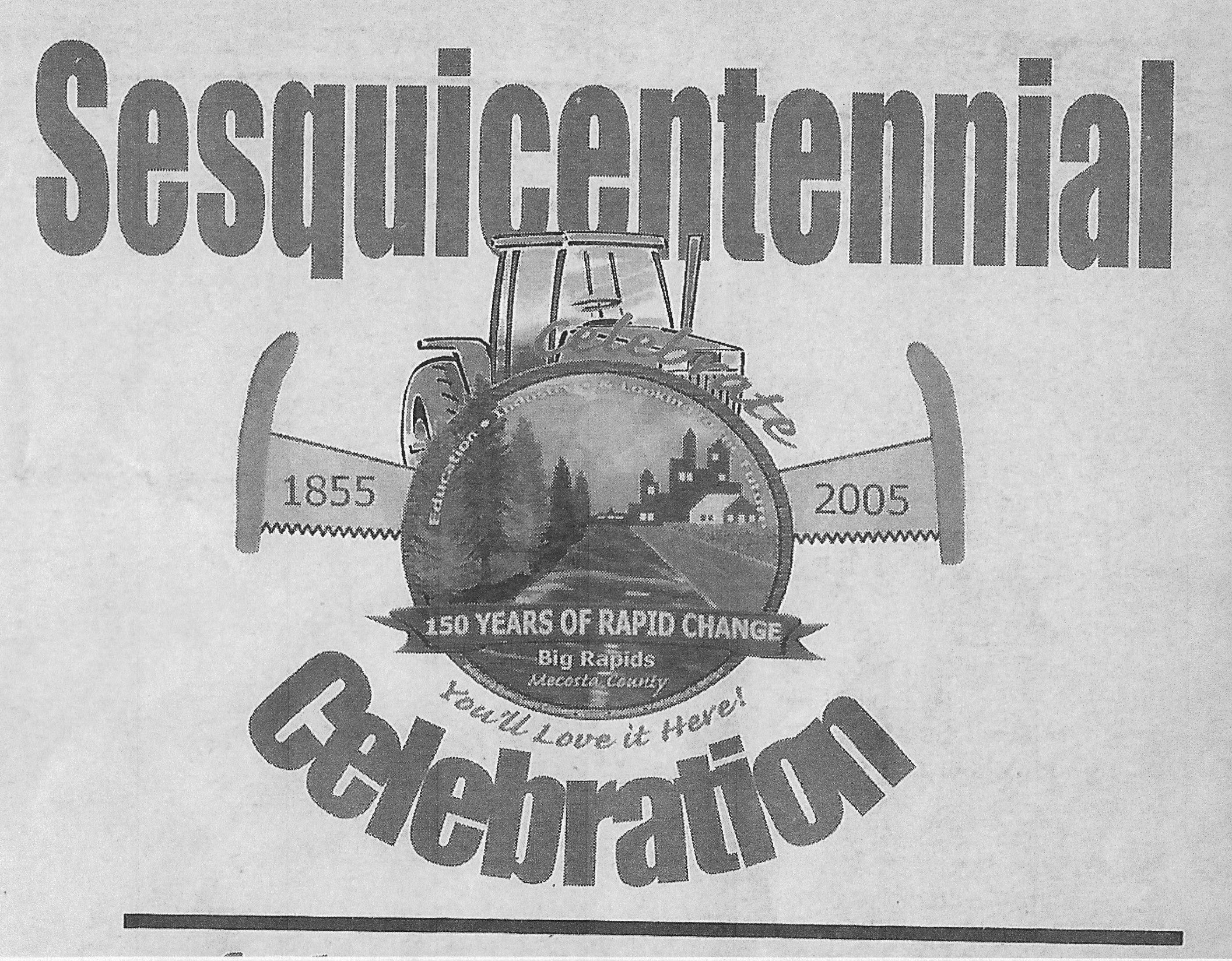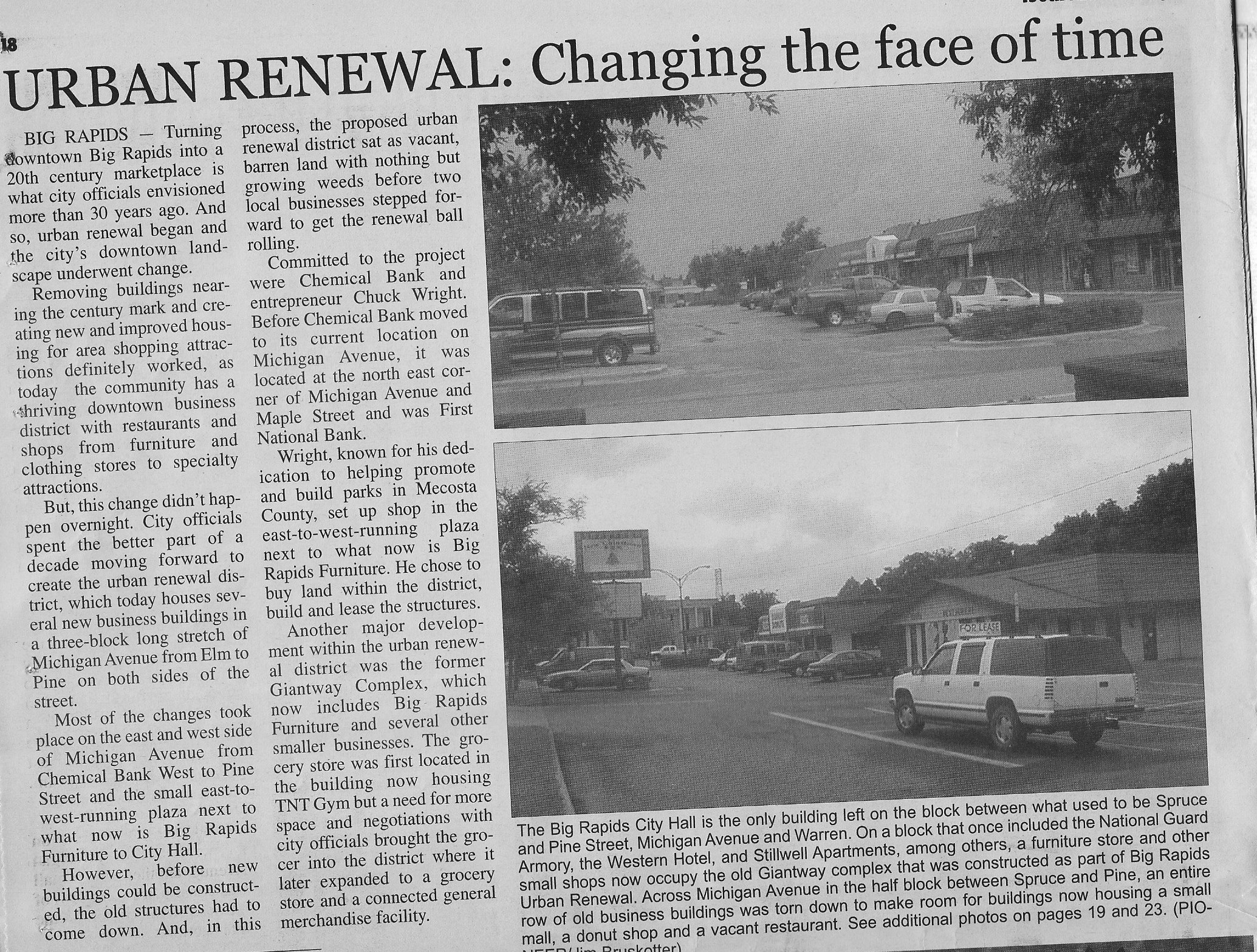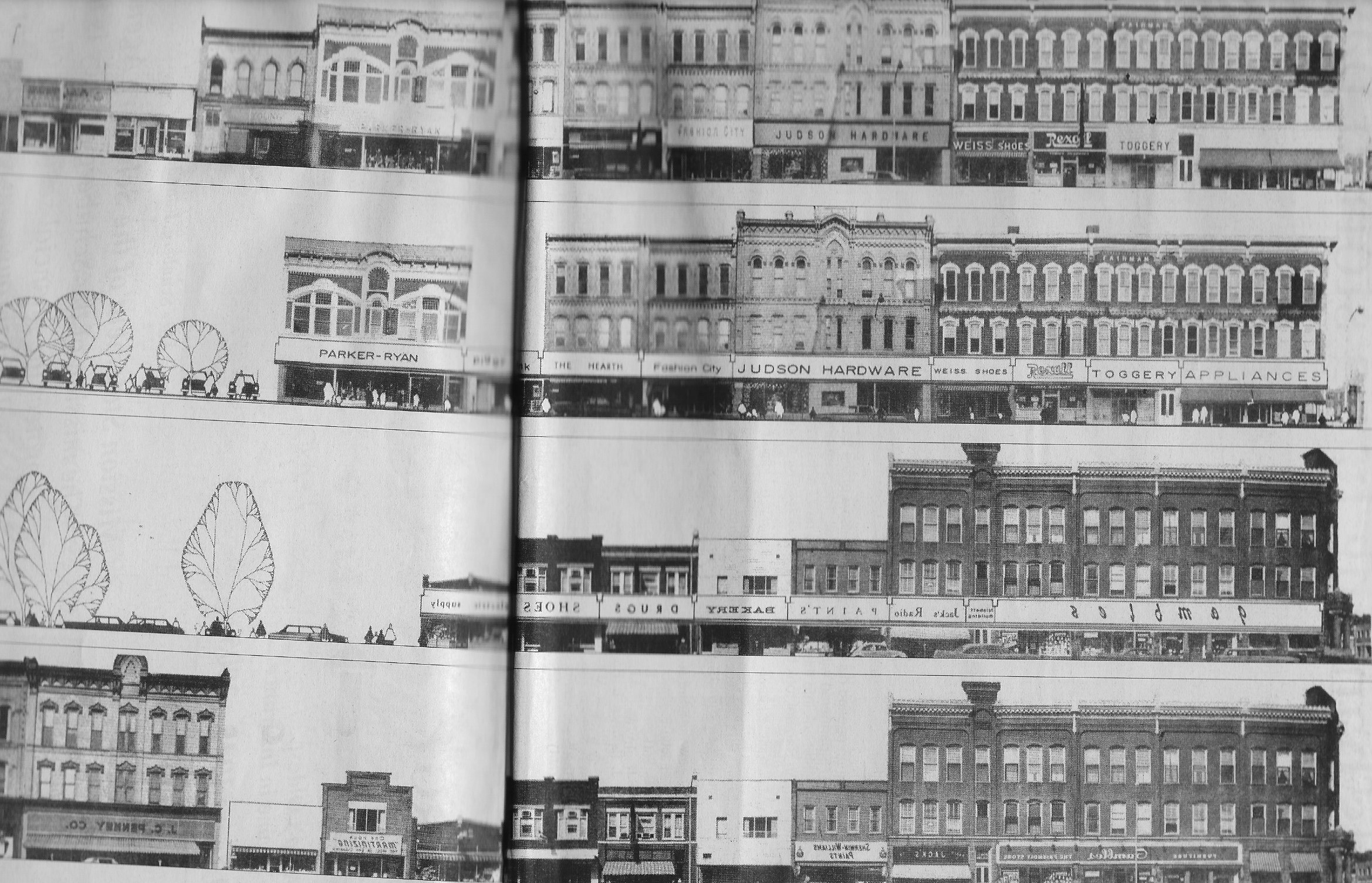
Part II - Business, a supplement to the Big Rapids Pioneer Newspaper. Used with permission.

URBAN RENEWAL: CHANGING THE FACE OF TIME
Turning Big Rapids into a 20th century markeyplace is what city officials envisioned more than 30 years ago. And so, urban renewal began and the city's downtown landscape underwent change.
Removing buildings nearing the century mark and creating new and improved housing for area shopping attractions definately worked, as today the community has a thriving downtown business district and restaurants and shops from furniture and clothing stores to specialty attractions.
But, this change didn't happen overnight. City officials spent the better part of a decade moving forward to create the urban renewal district, which today houses several new business buildings in a three block long stretch of Michigan Avenue from Elm to Pine on both sides of the street.
Most of the changes took place on the east and west side of Michigan Avenue from Chemical Bank West to Pine Street and the small east-to-west-running plaza next to what now is Big Rapids Furniture to City Hall.
However, before new buildings could be constructed, the old structures had to come down. And, in this process the proposed urbal renewal district sat as vacant, barren land with nothing but growing weeds before two local businesses stepped forward to get the renewal ball rolling.
Committed to the project were Chemical Bank and entrepreneur Chuck Wright. Before Chemical Bank moved to its current location on Michigan Avenue, it was located at the northeast corner of Michigan Avenue and Maple Street and was First National Bank.
Wright, known for his dedication to helping promote and build parks in Mecosta County, set up shop in the east-to-west-running plaza next to what now is Big Rapids Furniture. He chose to buy land within the district, build and lease the structures.
'
Another major development withi the urban renewal district was the former Giantway Complex, which now includes Big Rapids Furniture and several other smaller businesses. The grocery store was first located in the building now housing TNT Gym but a need for more space and negotiations with city officials brought the grocer into the district where it later expanded to a grocery store and a connected general merchandise facility.
A laundromat, among other businesses, st up shop across the street, in the plaza that now houses the Cakery's Party Zone and other businesses. A doughnut shop moved in, as well as a "greasy spoon" as the locals called it, in the building on the corner of Michigan Avenue and Pine Street housed a Chinese restaurant.
On the opposite end of the renewal zone, JC Penney constructed a new store to replace its former location and an A&P store (with a small bowling alley on the upper floor) on the northeast corner of Michigan and Elm.
And across the street on the west side of Michigan Avenue anither small mall was constructed just north of the intersection.
Businesses that either shut down or relocated included everything from a car dealership to a wallpaper and paint store, a smoke shop, plumbing shop, electric shop, television and refrigeration repair shop, credit bureau, liquor store, newspaper, restaurant, hotel and music shop.

Return to Mecosta sesquicentennial Page
Return to Home Page



